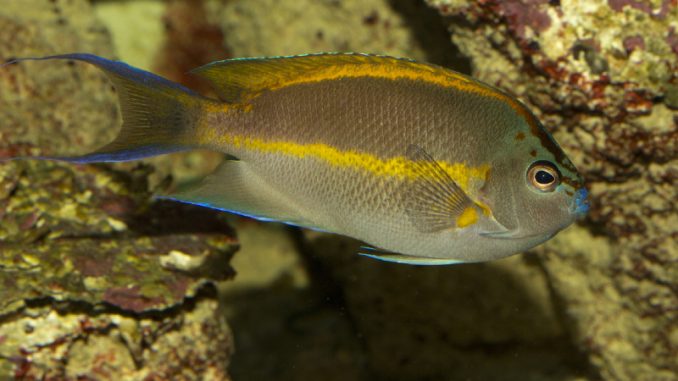
When choosing fish for your saltwater tank, you’ll likely come across lots of different angelfish varieties. One of the rarest and most sought-after is the Bellus Angelfish.
This is a beautiful species that may be difficult to acquire, but you’ll quickly fall in love with it.
Both males and females have their own stunning designs. They add plenty of interest to an aquarium too with their social nature.
We will discuss everything you might need to know about Bellus Angelfish. From their ideal tank to their preferred diet, it’s all covered here.
TABLE OF CONTENTS
Bellus Angelfish Facts & Overview
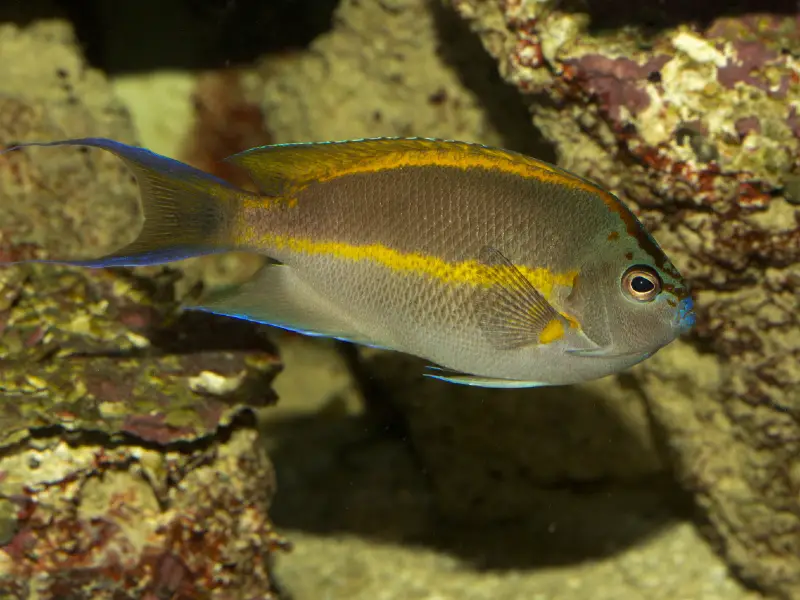
| Category | Rating |
| Care Level: | Intermediate |
| Temperament: | Semi-aggressive |
| Color: | Sexually dimorphic |
| Lifespan: | 10 years |
| Size: | Up to 7 inches |
| Diet: | Omnivore |
| Family: | Pomacanthidae |
| Minimum Tank Size: | 120 gallons |
| Tank Set-Up: | Saltwater with live rocks or corals |
| Compatibility: | Peaceful fish of a similar size |
The Bellus Angelfish, also known as the Ornate Angelfish, Bellus Lyretail Angelfish, or Genicanthus bellus, is a marine species from the Pomacanthidae family. This family contains all marine angelfish.
It is native to the Indo-Pacific where it lives on deep reefs.
They aren’t commonly sold in pet stores, so it may take you a while to find a stock near you. Their rarity raises their price too, you could have to pay over $100-$200 depending on their age/size.
A healthy fish could survive for over 10 years.
Typical Behavior
Bellus Angelfish are social and enjoy being in a small group of their own kind.
However, males will fight with each other and closely related species, so only keep one male per tank.
Appearance
The two sexes look different, but both forms are beautiful.
Males have an orange dorsal fin with an orange horizontal stripe running along the middle of the body, by the lateral line. Females have darker colors with a dark stripe near the lateral line.
Both sexes have a classic angelfish body shape, with a short dorsal fin that extends the length of the body and a lyretail at the rear.
An adult could reach up to 7 inches long, making them one of the smaller angelfish species available.
Habitat and Tank Conditions
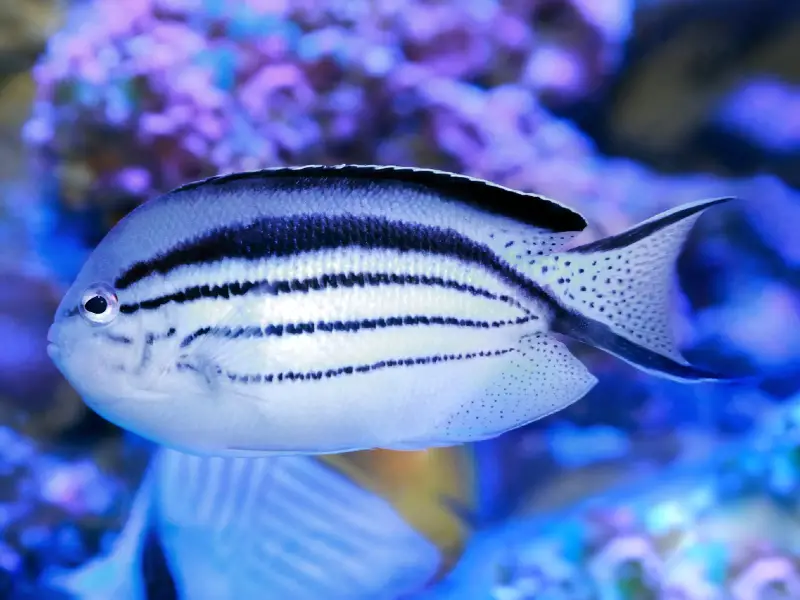
Bellus Angelfish are from the eastern Indian Ocean, in areas with strong currents. They live on coral reefs at depths of up to 328 ft.
They can be less commonly be found elsewhere in other warm, tropical environments.
Below we describe how to recreate their natural environment at home, which this the best way to keep them healthy.
Tank Conditions
Provide plenty of hiding spaces because Bellus Angelfish like to have their own territory. Using live rock is useful for grazing. You could choose to use live coral, but it’s not essential.
Maintain the temperature between 72°F and 76°F. The pH should be 8.1-8.4 and salinity needs to be 1.020-1.025.
These conditions are fairly standard for a saltwater aquarium, allowing Bellus Angelfish to mix with many other species.
What Size Aquarium do they need?
Even as one of the smaller angelfish species, they still need plenty of space. A tank of 120 gallons will help to reduce territorial problems.
Tank Mates
Do not mix Bellus Angelfish with any other angelfish species; this will likely cause fighting in your tank.
Tankmates should be relatively peaceful and of a similar size.
Some examples of suitable saltwater fish include Chromis, Butterflyfish, Blennies, and Clownfish. These fish are reef-safe and won’t damage your corals.
Can You Keep Bellus Angelfish Together?
You can keep this species in groups, they enjoy socializing. Males will fight with each other over territory and females, so form a harem of one male and multiple females.
Diet
These are omnivorous fish, so they can eat both meaty foods and vegetation.
In the wild, they mainly feed on plankton, though they also enjoy consuming small invertebrates and algae.
Try to provide a varied diet in the aquarium, supplying a range of nutrients. This should mainly consist of frozen or live foods like brine shrimp.
Spirulina and marine algae are also good options to add to their diet.
You will probably see them grazing algae from around the tank, though most of their food comes suspended in the water column.
Feed them twice a day, giving them an amount that they can easily finish in 2-3 minutes.
Care
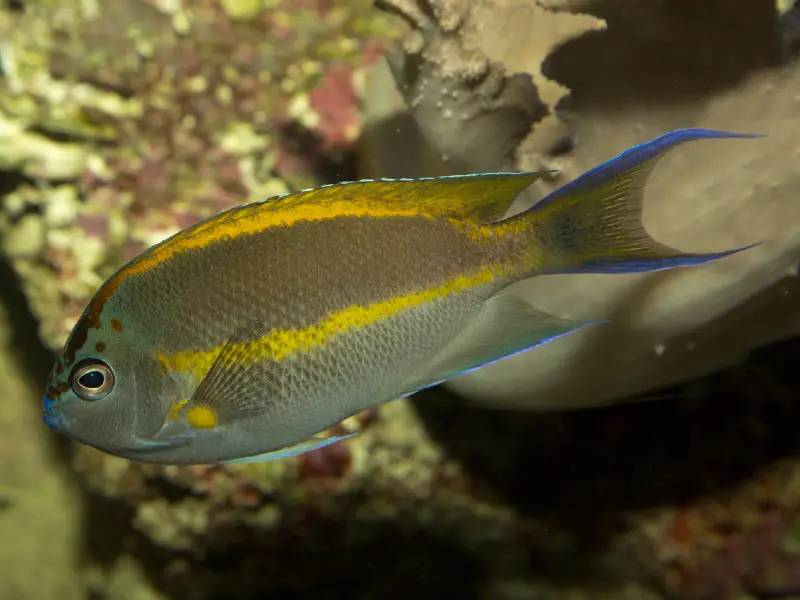
Caring for these fish isn’t too difficult. Setting up a suitable tank will help to prevent problems down the line, particularly with avoiding aggression.
Providing hiding spaces and the right combination of tank mates will help with this.
Keeping Bellus Angelfish healthy over extended periods requires you to maintain their ideal environment. This means conducting the regular cleaning that all fish appreciate.
Test the water regularly to ensure that the water parameters are at the levels they should be.
There aren’t any specific diseases that Bellus Angelfish are particularly prone to, but watch out for common saltwater fish diseases, such as marine ich.
Breeding
Getting Bellus Angelfish to spawn at home has proven to be very difficult, but some aquarists have managed to do it using large aquariums. Even after spawning, raising the fry is difficult too.
This species is hermaphroditic. All new adults are females, but the dominant females can turn into males if there isn’t one present.
A male will fertilize the female’s eggs, which she scatters around her territory.
To trigger spawning, the tank must be clean and maintained at its preferred conditions. Gradually raise the temperature to 76°F.
It will still be unlikely that they will spawn, this isn’t the best choice of fish for someone who wants to breed their fish.
Are Bellus Angelfish Suitable for Your Aquarium?
In terms of compatibility, Bellus Angelfish can fit into most marine setups, provided that there are no other angelfish in the tank already.
These attractive fish are social and active; they are always interesting to watch. The main thing that puts people off is the price tag, which is pretty hefty.
If you’re prepared to part with the money, these fish will brighten up your aquarium, immediately reassuring you that they were worth it.
Why did you get Bellus Angelfish? Let us know about your experiences in the comments below…

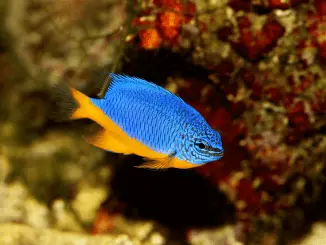
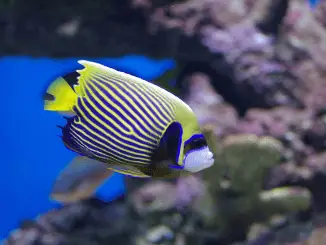
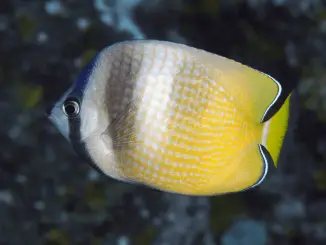
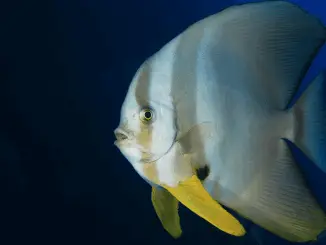
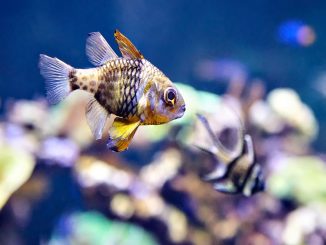

Be the first to comment